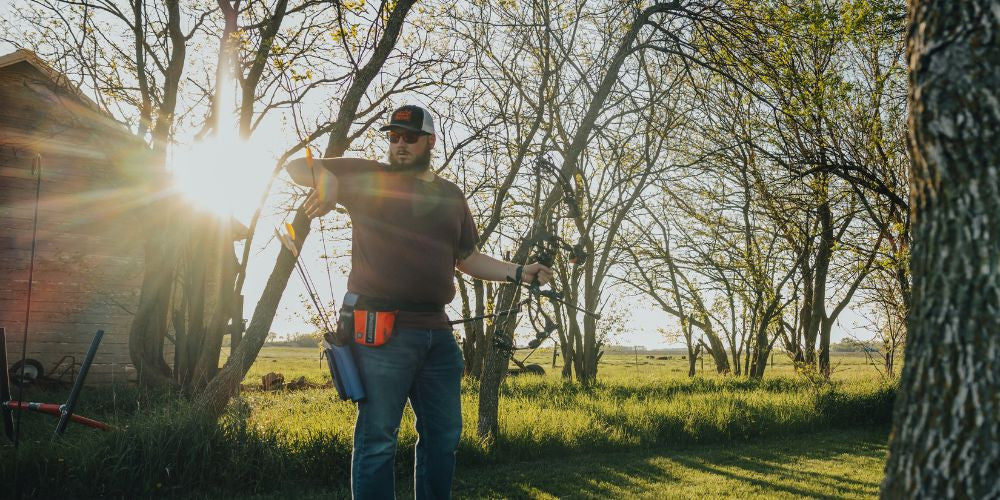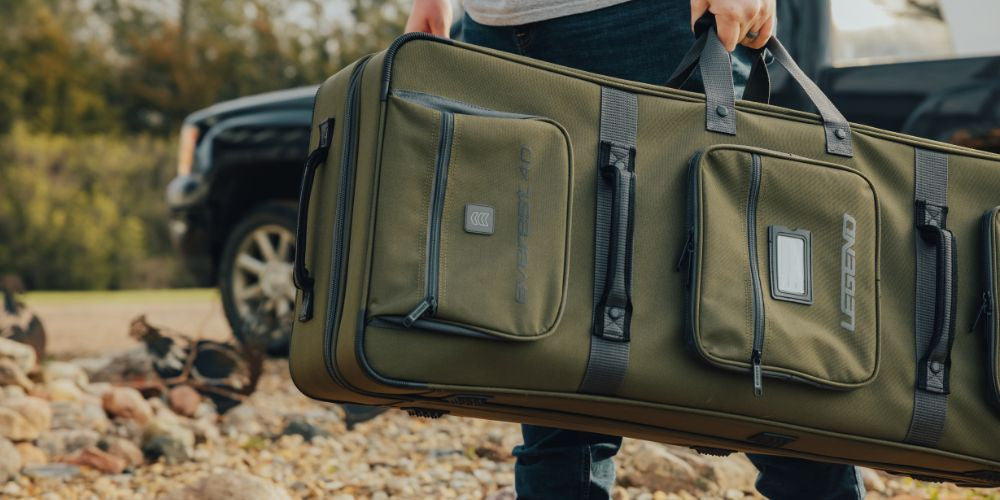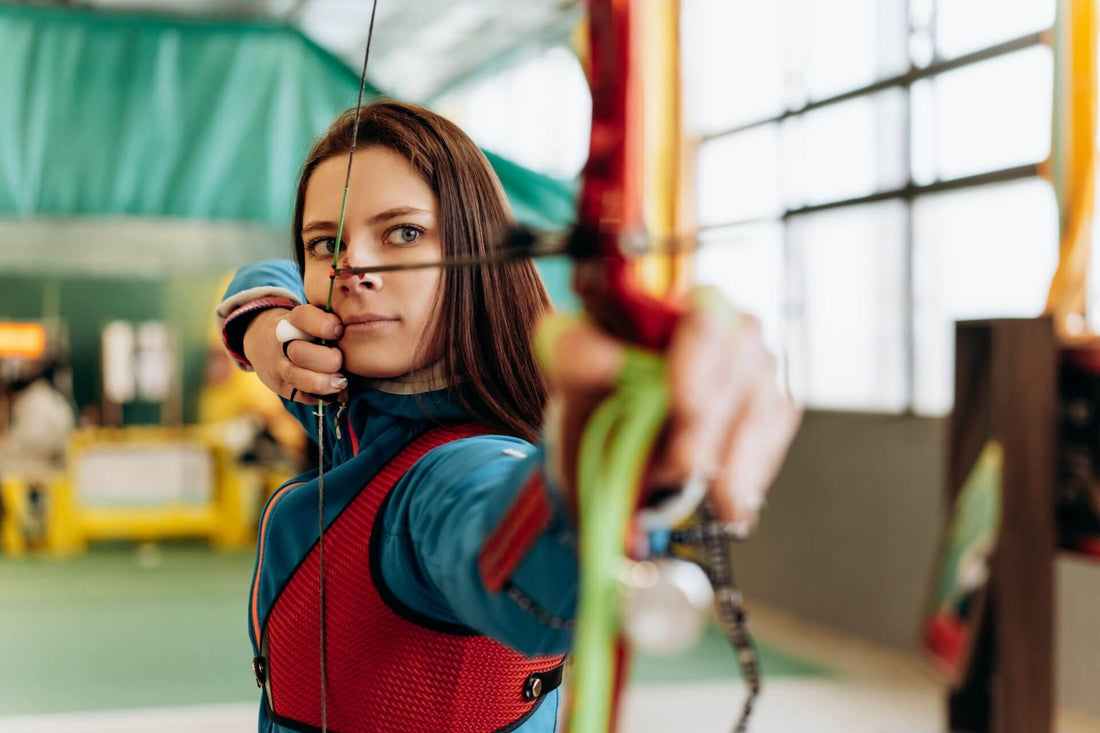Despite the clear dangers, bow dry firing is a common mistake among most archers. One reason for this is that many archers, especially beginner archers, don't understand the mechanics of a bow and the potential consequences of dry firing. Additionally, some archers may dry fire their bow out of habit or carelessness without realizing the potential damage they are causing. In this article, we will discuss the reasons why you should never dry fire your archery bow and the potential consequences of doing so.
What Does Bow Dry Firing Mean?

Dry firing a bow refers to the practice of releasing the string of a bow without an arrow in place. It is a common mistake in archery that can cause significant damage to the bow, string and even injury to the shooter. Even the most experienced archers sometimes accidentally dry fire their bows.
Watch this guy dry fire his compound bow below:
Dry Fire of a Compound Bow, Bow explosion
The energy from the release is absorbed solely by the bow when an arrow is not present, this can cause the limbs to bend and potentially snap, rendering the entire bow unusable. Additionally, dry fires can also cause serious damage to the riser, the part of the bow that connects each limb to the handle, the string, and even the cams, wheels, and pulleys in compound bows. The stress of all that energy release without an arrow can also cause the riser to crack, the string to break or become frayed, and cams, wheels, and pulleys to malfunction.
Why Dry Firing Can Be Dangerous
Dry firing a bow may seem like a harmless practice, but it can actually cause severe damage to the bow, string and even injury to the shooter. Bow dry fires can be dangerous for several reasons. Here are some of the most significant risks associated with bow dry fires:
Damage To The Bow
One of the main reasons to avoid dry firing your archery bow is the potential damage it can cause to the bow itself. When the string is released without an arrow in place, the energy from the release is absorbed solely by the bow. This can cause the limbs to bend and potentially snap, rendering the bow unusable. Additionally, when a bow is dry fired, it also cause damage to the riser, the part of the bow that connects each limb to the handle. The stress of the release without an arrow can cause cracks or even breakages in the riser. In extreme cases, the bow can be completely destroyed, requiring the shooter to purchase a new one.
Damage To The String
Another potential consequence of dry firing your bow is damage to the string. The string is the component of the bow that propels the arrow, and it is under a significant amount of tension during a shot. When the string is released without an arrow, the tension is not dissipated properly, which can cause the string to break or become frayed. If the string is damaged, it can no longer be used, and it will need to be replaced, adding an additional cost to the shooter. This can be a costly mistake, especially if the shooter is using a high-end bow and string.
Injury To The Shooter
Not only can bow dry fires cause damage to the bow and the string, but they can also lead to injury to the shooter. If the bow breaks or the string snaps during a dry fire, pieces of the bow can fly off and cause injury to the shooter or anyone nearby. Additionally, if the string frays or breaks, it can cause the bow to malfunction, leading to an unpredictable release and the potential for injury. Worst case scenario, the shooter can be hit by a broken bow or string, resulting in serious injury or even death.
Safety Risk
Dry fires can also pose safety concerns to anyone in the vicinity. The sudden release of energy can cause the bow to break or the string to snap, potentially hitting anyone nearby. It's important to always be aware of your surroundings and to always be aware of who is around you while handling a bow.
Bow Parts Susceptible To Be Damaged By A Dry Fire
Dry firing a bow can cause damage to several bow parts. The most likely parts to be damaged following a dry fire are:
- Bow Limbs:
The limbs of the bow are under a significant amount of stress when the string is released. When an arrow is not present to absorb the energy of the release, the bow's limbs are forced to absorb all of the energy, which can cause them to bend or even snap. This can render the bow unusable and require the replacement of the limbs.
- Riser:
The riser is the part of the bow that connects the limbs to the handle. It is also under a significant amount of stress during a shot, and a bow dry fire can cause cracks or breakages in the riser. Damage to the riser can affect the overall structure and stability of the bow, making it unsafe to use.
- Bowstring:
The string is the component of the bow that propels the arrow, and it is under a significant amount of tension during a shot. When the string is released without an arrow, the tension is not dissipated properly, which can cause the string to break or become frayed. If there's a dry firing damage, the string can no longer be used, and it will need to be replaced, adding an additional cost to the shooter.
- Cams, Wheels, And Pulleys:
Compound bows have more moving parts, such as cams, wheels, and pulleys, that can be damaged if dry firing occurs. These parts are under a lot of tension and pressure during the shot, and they can be damaged if the energy is not dissipated properly. This can cause the dry fired bow to malfunction and can lead to injury.
How To Avoid Accidentally Dry Firing A Bow

Bow dry fires can cause significant damage to the bow, the string, and even injury to the shooter. It's essential to be mindful of the potential consequences and to take the necessary precautions to avoid accidentally dry firing. Below, we will explore the possible ways to avoid dry firing a bow.
Always Keep An Arrow In Place
The most important step to avoid dry firing a bow is to always have an arrow in place before releasing the string. This may seem obvious, but it's easy to forget, especially when you are focusing on aiming or practicing your technique. To avoid this mistake, make it a habit to always check that an arrow is in place before releasing the string.
Another thing to always keep is mind is matching your arrows to your bow and bow weight. Your arrow type and weight should also match your draw length and draw weight, as shooting with lighter arrows may have the same effect as dry firing. Also, ensure that you always have your arrows correctly nocked before going ahead to take a shot.
Regularly Inspect The Bow And String
Regularly inspecting your bow and string for wear and tear can help prevent accidents. Look for any signs of damage, such as cracks or fraying in the bow or string. If you notice any issues, it's best to address them immediately to avoid further damage. Additionally, make sure to keep your bow and string clean, as dirt and debris can cause wear and tear over time.
Follow Safety Guidelines
Always keep safety in mind while handling an archery bow and follow the manufacturer's recommendations. This includes proper handling techniques, as well as recommendations for storage and maintenance. Make sure to read the user manual and familiarize yourself with the bow's specific safety guidelines.
Practice Good Bow Habits
Practicing good habits can also help prevent dry firing. For example, always keep your bow in a secure, upright position when not in use, and avoid handling the bow in a reckless or careless manner. Additionally, it's essential to be aware of your surroundings and to always be aware of who is around you while handling a bow.
What To Do After Dry Firing Your Bow

If you have accidentally dry fired your bow, it's essential to take the necessary steps to address any potential damage. Here are some things to immediately do after a dry fire incidence:
- Inspect The Bow
The first thing you will need to do is to get a magnifying glass and a bright light and look over the limbs, especially near the cams, for any cracking or splintering. Carefully inspect the bow for any signs of damage, such as bent or broken limbs, cracks in the riser, or any other issues. Pay special attention to the tips of the limbs, as they are the most likely to be damaged during a dry fire. If you notice any damage in the dry fired bow, it's best to have the bow inspected by a professional to determine the extent of the damage and whether it can be repaired. In some cases, the bow may need to be sent back to the manufacturer for repair. Also check the limb pocket, if you see any crack or deformation it's a sign that the bow is damaged.
- Check The String
Inspect the string of the dry fired bow for any signs of fraying or breaking. If the string is damaged, it will need to be replaced. Keep in mind that replacing a string can be costly, especially if you are using a high-end bow and string. String replacement should only be done by a professional as it can be dangerous if not done properly. Furthermore, if you see any signs of serving separation or twisted strands, it's a sign that the bow should not be used until the string is replaced.
- Seek Medical Attention
If you or anyone nearby is injured as a result of dry firing the bow, seek medical attention immediately. Injuries caused by dry firing can range from minor to severe, and it's important to get prompt medical attention to minimize the risk of complications.
- Take Preventative Measures
After experiencing dry firing, it's important to take preventative measures to ensure that it doesn't happen again. This includes always keeping an arrow in place before releasing the string, matching your arrows to your draw weight and regularly inspecting the bow and string, and practicing good habits, such as proper storage and handling of the bow. Also, be aware of the condition of your bow and string. If you notice any signs of wear or tear, it's best to replace them before dry firing occurs.
- Professional Inspection
If you suspect your bow is damaged after a dry fire, it's always better to take it to a pro shop for a complete inspection. There are instances when despite the absence of any obvious structural damage, your bow might have suffered internal damage which you might not be able to detect on your own. Professional archery technicians will be able to identify any issues and recommend the best course of action. They will also be able to advise you on whether it's necessary to send the bow back to the manufacturer for repair.
Conclusion
In conclusion, dry firing a bow is a dangerous practice that can cause significant damage to the bow, the string, and even injury to the shooter. It's essential to be mindful of the potential consequences and to take the necessary precautions to avoid dry firing. If you experience an accidental dry fire, take the necessary steps to address any potential damage and take preventative measures to ensure it doesn't happen again. Remember to always prioritize safety and seek professional help if you are unsure of how to proceed. By following these guidelines, you can ensure the longevity of your bow and the safety of yourself and others.
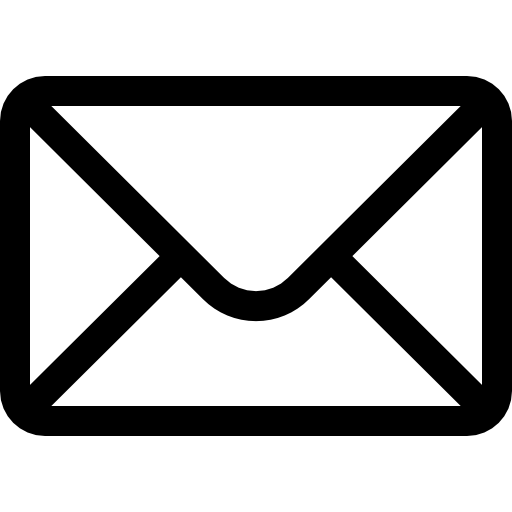 cust@legendarchery.com
cust@legendarchery.com 302 503 5767
302 503 5767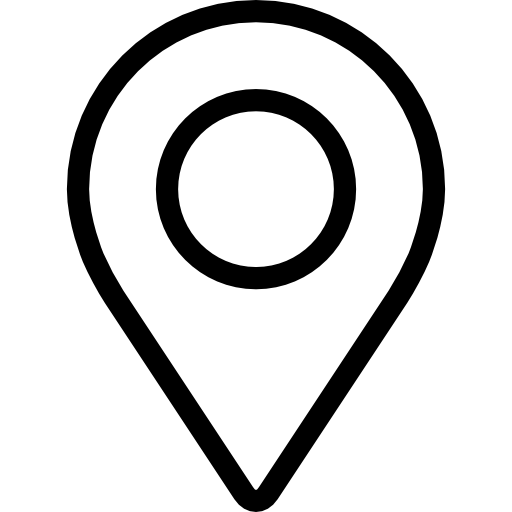 Sauk Village IL 60411
Sauk Village IL 60411
